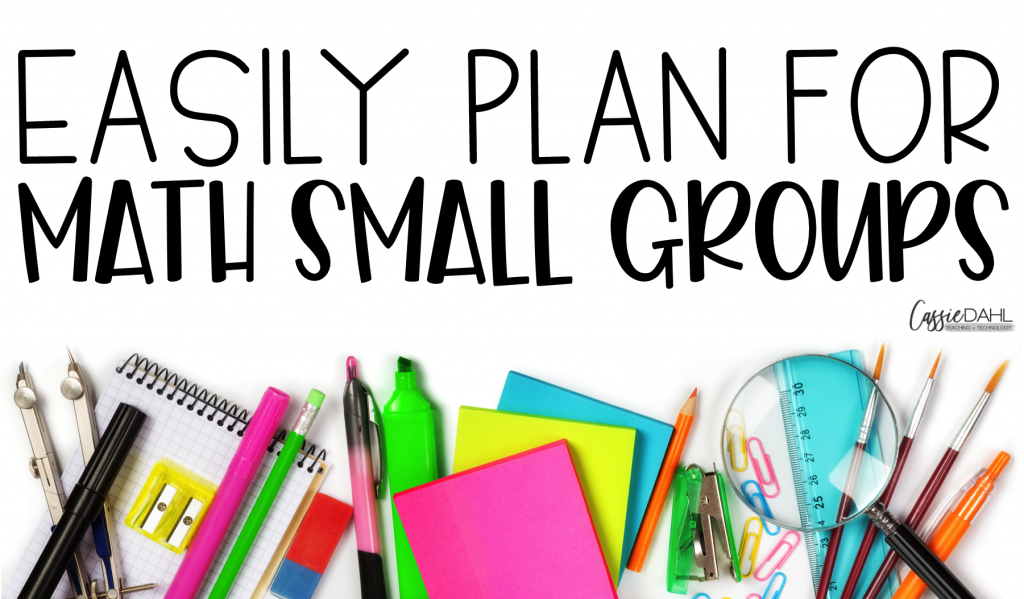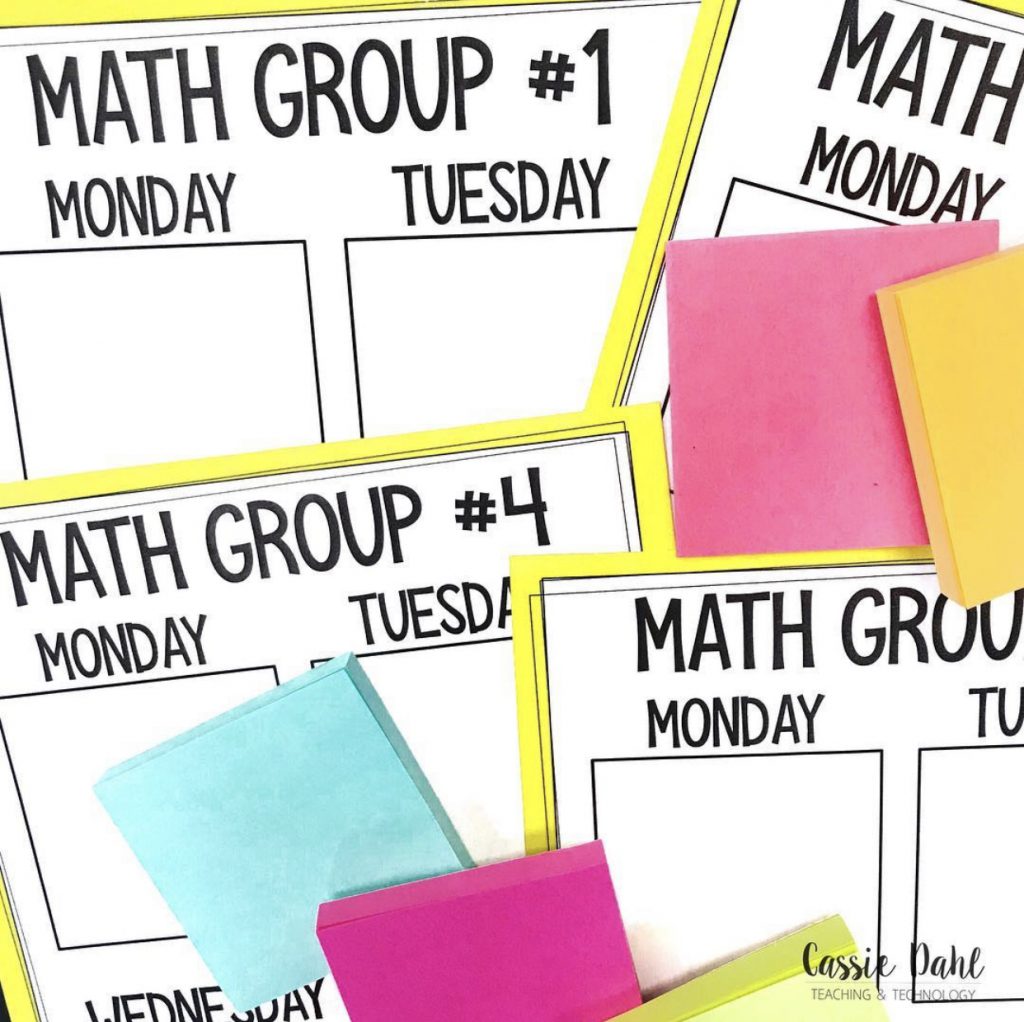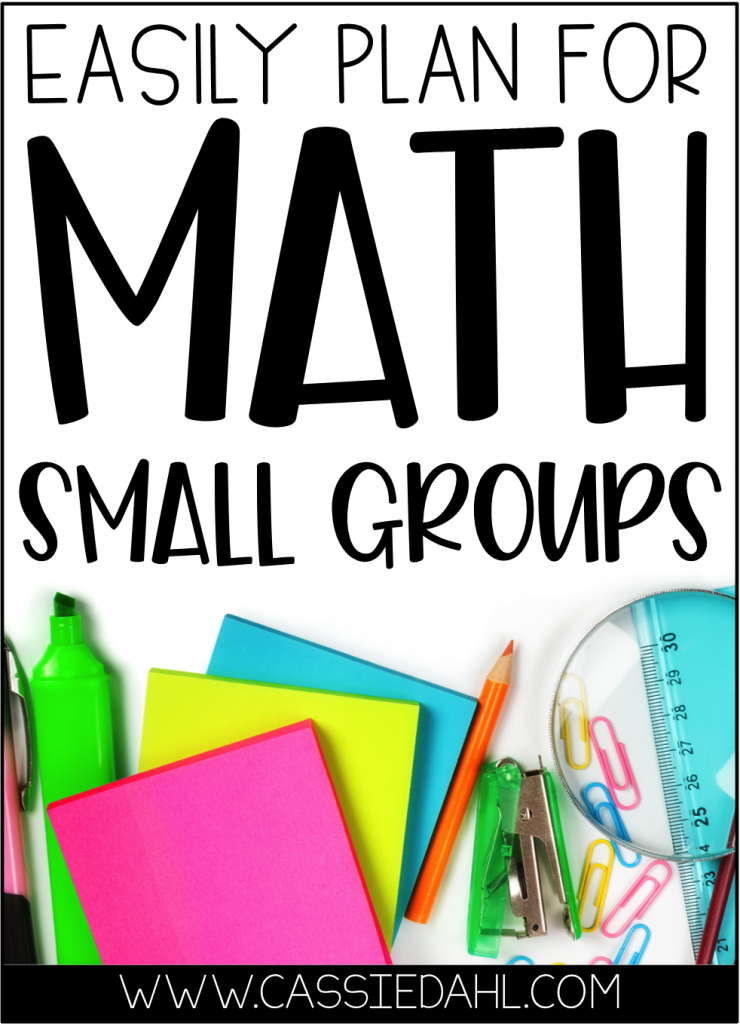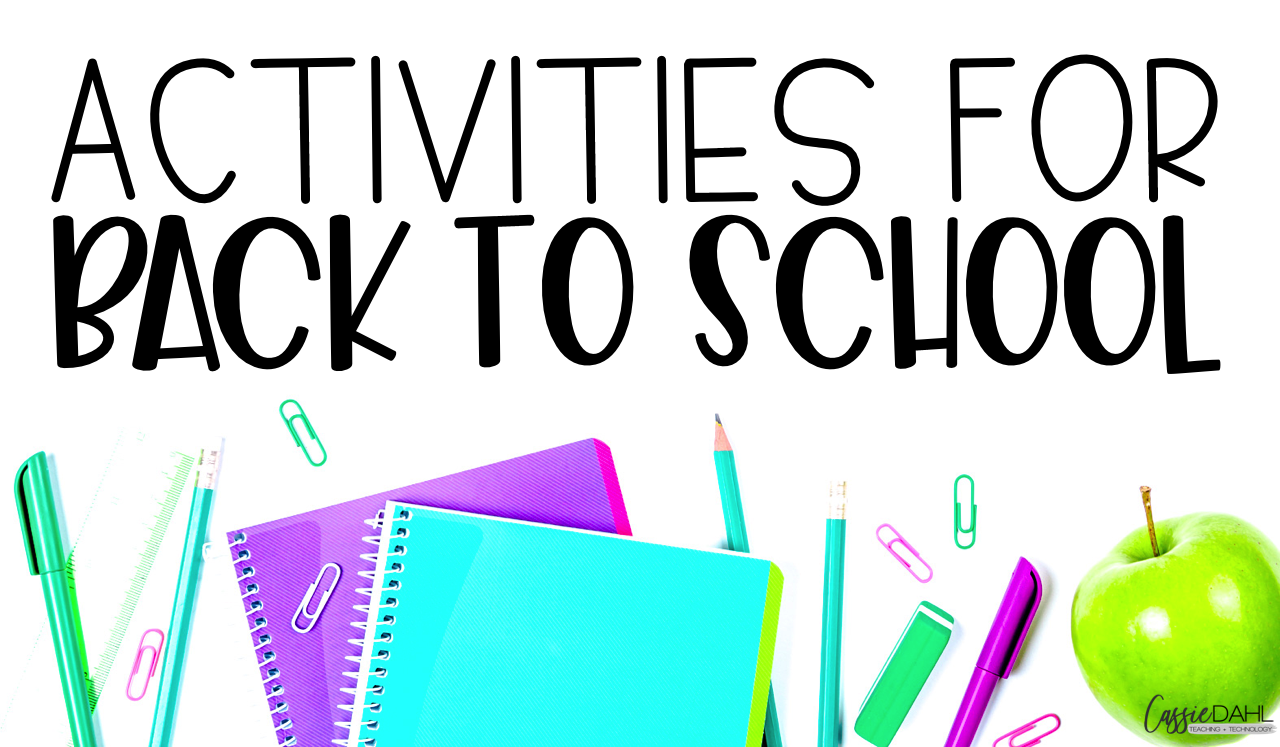Differentiating your math instruction can be challenging, but you can use math small groups to differentiate your lessons . In every classroom you have students who are working on level, below level, or above level. You have students who have mastered your lesson in 2.2 seconds flat and others who have not mastered the prerequisite skills they need to learn the new content. The hardest part about differentiating math instruction is planning to have students in multiple places within a content area all at the same time.

A few years back, I switched to teaching with math small groups. Each unit, I blended whole group instruction with small group instruction so that I could pinpoint my students’ needs and ensure that they were developing all of the necessary skills along the way. Student arrangements in the groups was fluid and dependent on their mastery of prerequisite skills.
Planning for these small groups was so challenging. My students all had different needs and this meant that the content within a unit would need to be chunked in different ways, arranged differently, and taught differently. To manage this in my classroom, I developed math planning pages. These planning pages allow me to easily plan for math small groups.

These planning pages are simply laminated guides that I can stick post-it notes on. At the beginning of a new unit, I determine what skills my students need throughout the unit and place students in their groups for the unit. On the post-it notes, I list out the assigned lessons from the unit + any prerequisite skills. I re-stick the post-it notes in order that they will be taught and stick them to the back of the planning page. I pull off 4-5 at a time to plan out our week (I usually only teach small group math four days a week).
If I am planning a whole group lesson within the unit, I skip adding a group post-it note to the planning pages. The best part of these planning pages is that they give you the ability to move things around. Let’s say you are knee deep in long division, but you realize one of your groups needs to review multiplication/division fact families. You can just move the post it notes “back” a day and add a new lesson in!
Here are some extra tips when planning for math small groups:
- Practice routines from the very beginning.
- Answer these questions: What will your other students be doing during this time? How long will each rotation be? How often will you see each group?
- Think about what lessons will lend themselves easily to small group (hands-on manipulatives are ideal for using in math small groups).
- Identify the overarching standards that you need your students to master within the unit. Then identify the prerequisites. Then determine what abilities your students already have. Finally, map out what the whole unit looks like.
- Use timers! It is so hard to stay on track without a timer. Stick to your time, do not let one group run over on their time so another group ends up being shorted.
- Build in “blank” days within your unit plan. These are days that you can easily add a review lesson, extend a lesson into, or switch it up with a project based activity to enhance student learning.
I made these math planning pages into a handy free PDF for you. Grab them HERE. You can also use them for small group (guided) reading! Using small groups to teach math will benefit all of your students (not just your students who struggle). They allow you to push your top students and solidify skills with your group who is working at grade-level.





